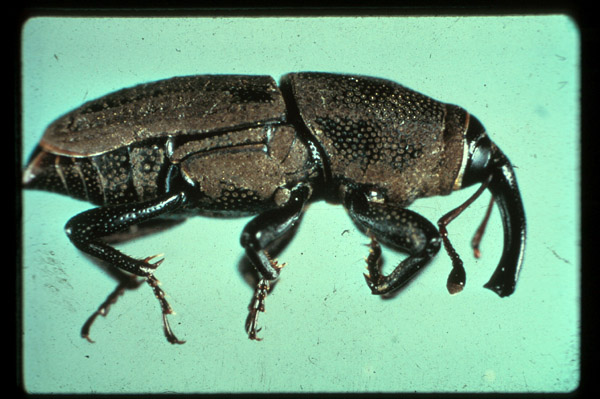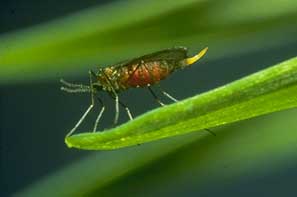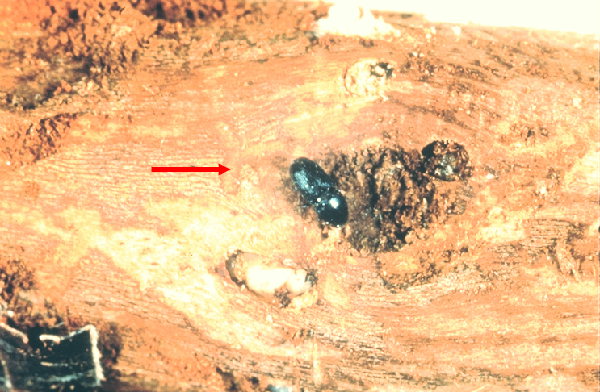
Frank Sadorus
Photograph, circa 1910
Illinois State Museum Collection
Gift of Raymond Bial
Plants and Insect Pests
Where there are agricultural plants, there are insects. Until the 1930s, it was expensive and difficult if not impossible to fight all the insects that attacked cereals, forage crops, fruit orchards, vegetable gardens, and trees.
Stephen Forbes, born on the Illinois prairie, grew up to become one of the first ecologists. During his career, he worked for the Natural History Survey (president) and the University that would later become the University of Illinois at Champaign. To an audience one night about 1883, he talked about the insect pests of the corn plant:
"Every part of the plant, at every stage of its growth, from its cradle in the earth to its grave in the granary, is refularly taxed to support a ring of plunderers who have fastened themselves upon it, draining its life and appropriating its substances."
Before the age of chemical pesticides, farmers used other methods to control insects. One method was crop rotation. A crop of wheat was followed by a crop of beans, then another crop of wheat. Skipping a year would lower the number of wheat pests in the area for the next crop.
Beans were sometimes allowed to or encouraged to grow among other crops because their shade and increased moisture deterred insects.
Another method was to plow or harrow the soil and plant debris in the fall. It killed or buried many insects, as did the clearing of the fields of rotten plant material and weeds.
The timing of planting was important. If grains were sown and started to grow before insects came out, they had a healthy head start.
Some of the insects that were major pests during the 1880-1930 period were, according to Robert Croker's Biography of Stephen Forbes:
| Cereal of Forage |
|
| Chinch bug (Blissus leucopterus) |  |
| Corn billbug (Sphenophorus sp) attacks the corn stem near the root. The species shown is called the Bluestem billbug. |  |
| Corn root aphid (Anuraphis maidiradicus) |  |
| Hessian Fly (Mayetiola destructor) |  |
| Wheat-stem maggot (Meromyza americana) |  |
| Wheat jointworm (Tetramesa tritici) |  |
| White grub (Phyllophaga sp.) |  |
| Fruit |
|
| Cankerworm (Paleacrita vernata) |  |
| Codling moth (Cydia pomonella) |  |
| Fruit bark beetle (Scolytus rugulosus) attacks plum, cherry, peach, and apricot trees. The female digs an egg-laying chamber between the bark and wood. |  |
| San Jose scale (Quadraspidiotus perniciosus) attacks peach, pear and apple fruits. |  |
| Plum curculio (Conotrachelus nenuphar) |  |






